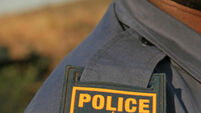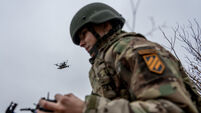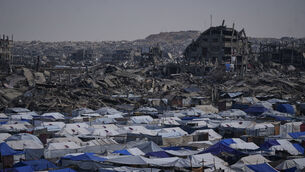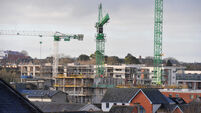Trapped survivors have 'excellent' chance of rescue
Rescue experts today said that people trapped under rubble after a massive explosion at a plastics factory had an “excellent” chance of being saved.
Graham Payne, director of the disaster rescue service Rapid UK, said hopes were high because fire crews were using a combination of high-tech equipment and a softly-softly hands-on approach in their rescue attempt.
Up to 16 people were still feared trapped under debris after the blast, which completely flattened the Stockline Plastics building in the west end of Glasgow .
Mr Payne said rescue teams were using a combination of high-tech equipment and manual digging to find the people who were expected to be trapped in voids between the debris.
Fibre optic cameras would be lowered into these voids to locate the injured or unconscious bodies.
These would be coupled with CO2 detectors to locate any people covered in debris by their breath, which the cameras may otherwise miss.
Sound locators, which can pick up the noise of people tapping on the underside of debris or moving around, would also be used in the search.
Sniffer dogs were reportedly also called in to help locate the victims more quickly.
Digging would depend on the size of the chunks of rubble, according to Mr Payne, who said the best method to shift debris from the blast would be to use a combination of shifting rubble by hand, jackhammers, and to draft in cranes for any larger pieces.
Fire rescue crews were mainly digging people out of the collapsed building manually and piece by piece to avoid disturbing rubble and causing more casualties.
Although Mr Payne stressed there was no imminent danger to the people still trapped from the debris collapsing further.
He said: “One of the best things they can do is a hands-on rescue. They’re not going to be subject to earthquake aftershocks like in situations we usually deal with so they shouldn’t get too much more movement from the rubble. So it’s a case of digging in and getting people out.
“There is always a risk of structural collapse but they’re going to have structural engineers on hand who will advise them so they can secure one part before they move on to the next so it may be a fairly protracted rescue.”
The biggest problem for rescue teams, Mr Payne added, was pinpointing exactly where the people were under the rubble but he said rescue crews have two factors on their side giving them an “excellent” chance of success.
He said: “Half the problem is locating exactly where these people are trapped.
“But they will have the plans to the factory to hand and they’ve pulled survivors out so they’re going to know more or less where people are at the time of the explosion so that is another big bonus.”














